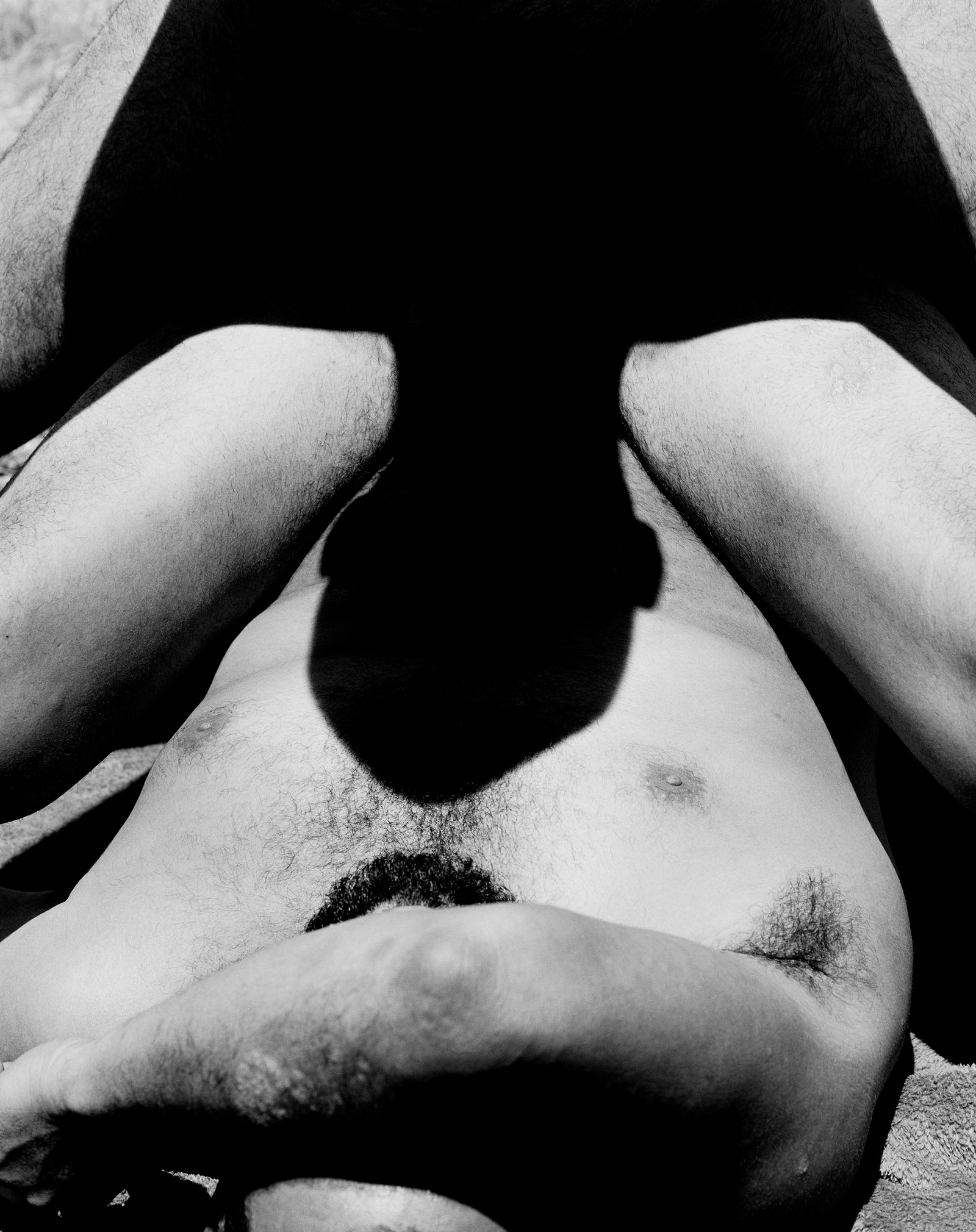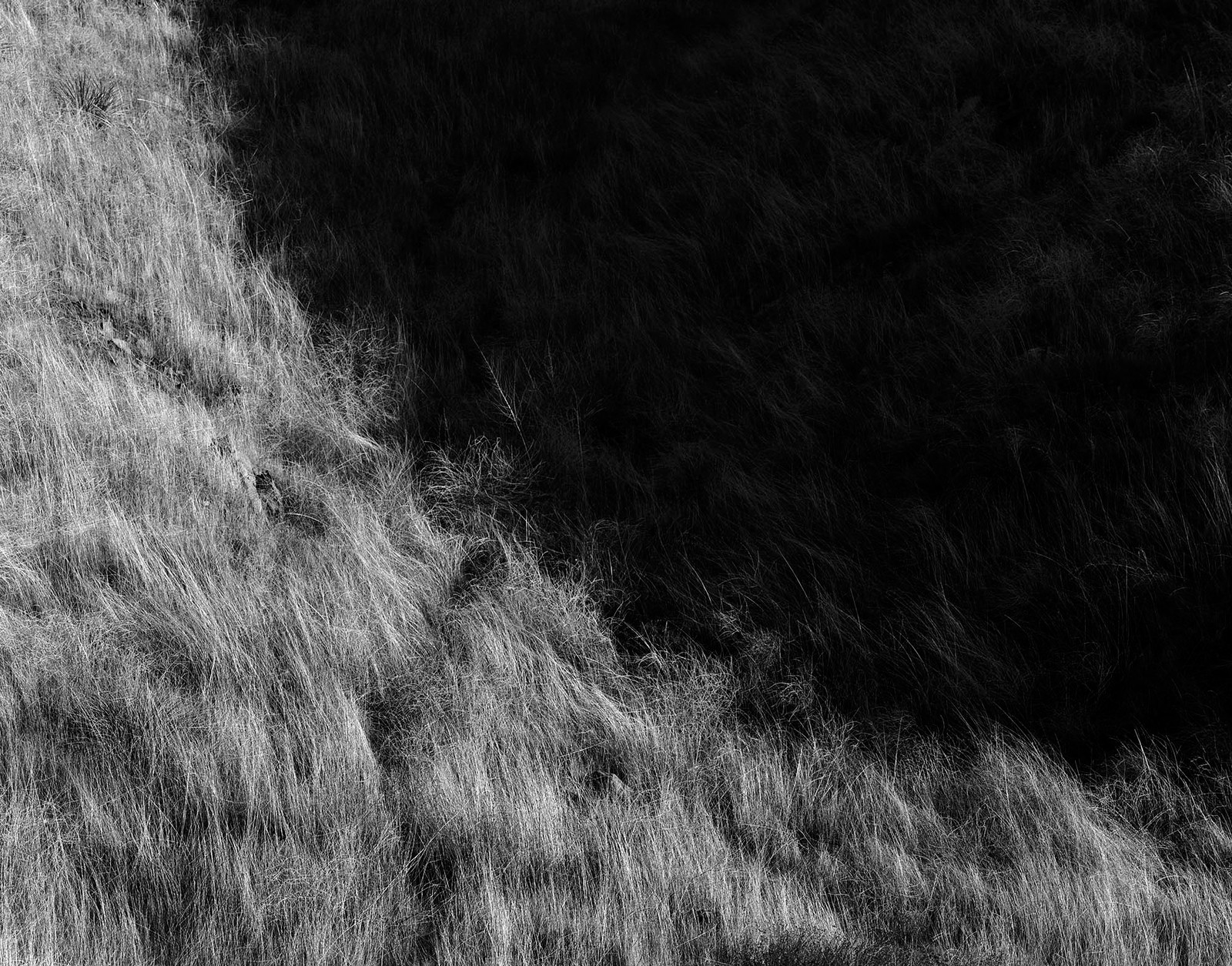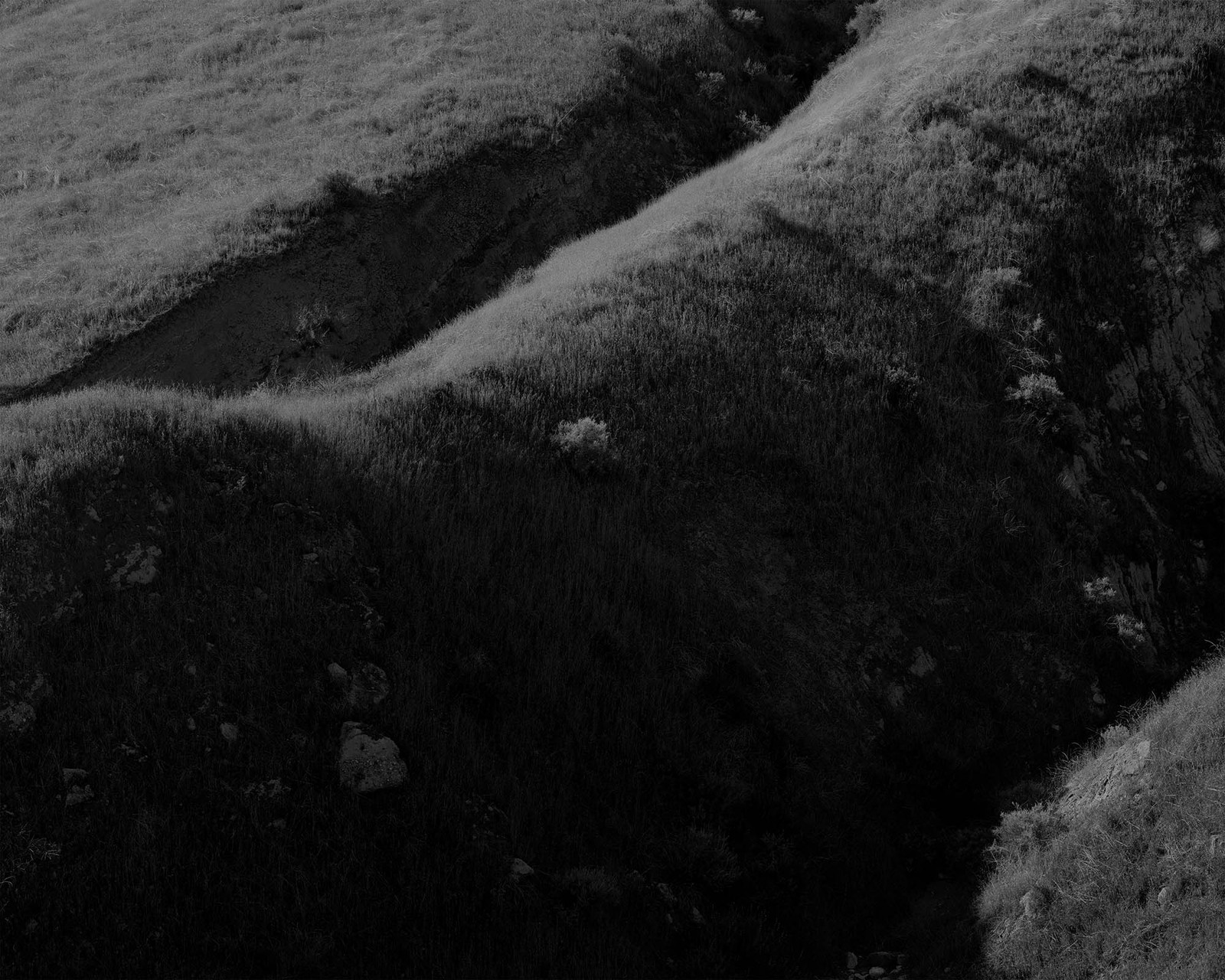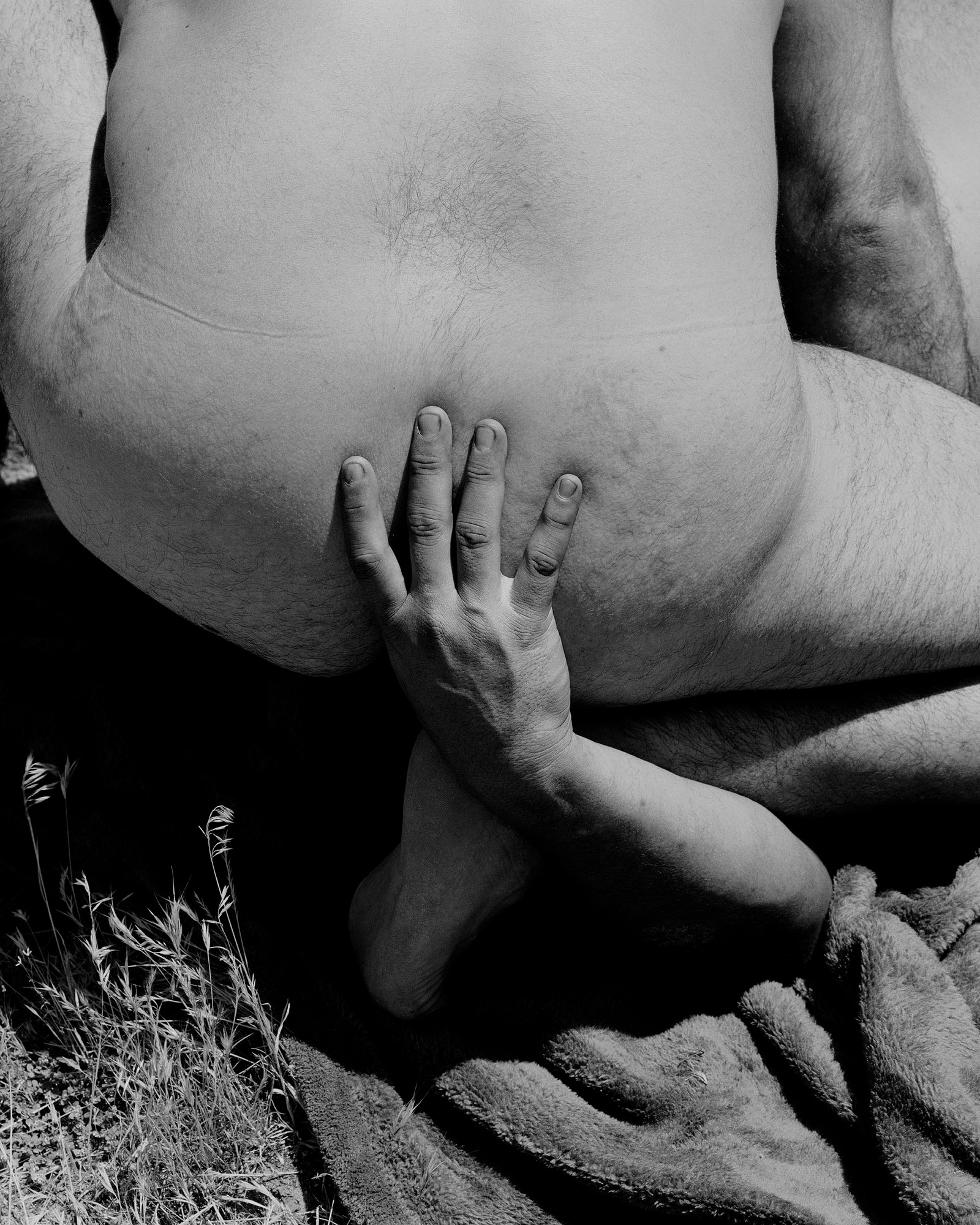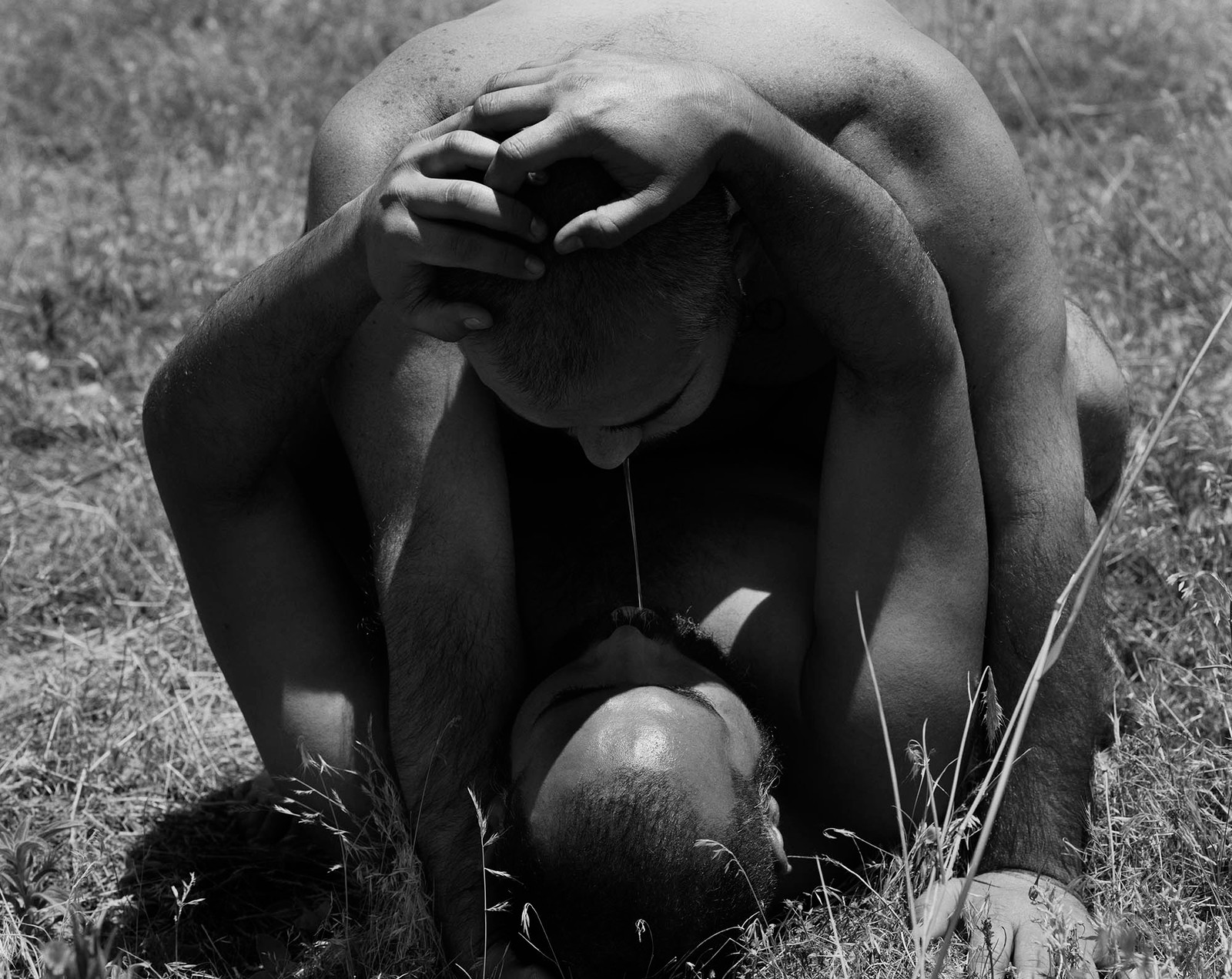Mark McKnight was 18 or 19 when a photographer’s work first hit him hard. “There were two shows at the Hammer Museum in LA,” he says. “I remember borrowing my parent’s car and driving into town to see them. The first was a Stephen Shore retrospective. He is probably the reason I picked up a view camera. The second exhibition was a Wolfgang Tillmans survey.”
Mark mentions early in our conversation that he came out relatively late. With this in mind, his immediate reaction to Wolfgang’s work — in all its tender and often quiet framing of male queerness — was overwhelming. “I remember one particular photograph of three men embracing,” he says. “In the foreground, one of them is smiling softly, eyes closed. There is a profoundly tender, platonic quality to their embrace. It’s an almost brotherly depiction of homo-social intimacy that was so unfathomable in my mind up until that point that I just stood there in awe until I eventually burst into tears.” It would be some time before Mark came out, “but I carried that picture with me and found a kind of respite in it.”
His new book shoulders a lot of the emotional weight of queer male sexuality. Its two subjects, copulating in the long grass of a large open landscape, are strong and virile — examining every detail of each other’s bodies — but tender, and full of longing. Hands grasp flesh and fingers enter mouths, strands of saliva and thick metal chains tie one to the other even when they’re not being penetrated. As their entanglement progresses, few sexual acts are left unexplored.
But the narrative of this book is far more layered than provocative, black-and-white eroticism. Given his complicated relationship with coming out, it’s no surprise Mark wants to explore the tension between pleasure and pain. Even the book’s name — Heaven Is a Prison — implies a dichotomy. “These images are overflowing with me in ways that continue to be revealed,” he says. “It’s the best part of being an artist, the things the work teaches you about yourself.”
© Mark McKnight 2020 courtesy Loose Joints & Light Work
Stephen Shore and Wolfgang Tillmans were the first two photographers that resonated with you, but why were you drawn to this particular medium?
I was (and still can be) very reserved. I took a photography class in high school and was completely enamoured with it. As a closeted, brown queer in a predominantly white, conservative desert suburb, the world didn’t particularly feel like a place that belonged to me. Photography gave me license and agency to exist publicly, to experience the world in ways I’m not sure I would have otherwise. Alternately, the darkroom provided a space in which to take solace, to reflect on my experiences and make meaning out of them. Not much has changed!
I was (and still can be) very reserved. I took a photography class in high school and was completely enamoured with it. As a closeted, brown queer in a predominantly white, conservative desert suburb, the world didn’t particularly feel like a place that belonged to me. Photography gave me license and agency to exist publicly, to experience the world in ways I’m not sure I would have otherwise. Alternately, the darkroom provided a space in which to take solace, to reflect on my experiences and make meaning out of them. Not much has changed!
What did the first images you ever made look like?
I was a kid, I think they were probably all over the place. I will say that my high school “masterpiece” was this horrible picture of a transient street performer from behind. They published it in my high school yearbook! The subject is wearing a clown costume and descending down an escalator into a metro station. I spent hours in the darkroom dodging and burning (for your readers who aren’t photography nerds: these are darkroom techniques). It was really important to me that the clown appeared to descend into this abyssal black. I spent forever printing it. Reflecting on the picture now, it’s kind of mind-blowing to see that I had a desire to affect mood through quality of print at that age, that I was also interested in obscuring faces as a way of creating archetypes. As an educator, it’s also so great to show students this awful picture and make fun of myself for having made this corny, exploitive, problematic photograph. I find that my criticism of their work feels less personal if I’m not afraid to highlight my own errors in judgment or taste.
I was a kid, I think they were probably all over the place. I will say that my high school “masterpiece” was this horrible picture of a transient street performer from behind. They published it in my high school yearbook! The subject is wearing a clown costume and descending down an escalator into a metro station. I spent hours in the darkroom dodging and burning (for your readers who aren’t photography nerds: these are darkroom techniques). It was really important to me that the clown appeared to descend into this abyssal black. I spent forever printing it. Reflecting on the picture now, it’s kind of mind-blowing to see that I had a desire to affect mood through quality of print at that age, that I was also interested in obscuring faces as a way of creating archetypes. As an educator, it’s also so great to show students this awful picture and make fun of myself for having made this corny, exploitive, problematic photograph. I find that my criticism of their work feels less personal if I’m not afraid to highlight my own errors in judgment or taste.
© Mark McKnight 2020 courtesy Loose Joints & Light Work
Tell us a little bit about your work now, and the kind of stories you’re drawn to.
I’m interested in themes, in asking questions, and in equivocality more than “stories,” at least in any conventional narrative sense. In Heaven Is a Prison, for example, I was thinking about the ways in which love is paradoxically liberating and binding. I was also thinking about the ways in which pain — emotional or otherwise — can be a conduit for pleasure, deeper intimacy. In the book I’ve literalised that through the depiction of BDSM, but I think it works because BDSM is inherently so symbolic. It was like a ready-made metaphor. I’ve been asked a few times recently if the book is a re-imagining of The Book of Genesis. It’s not. If anything, I see the protagonists in Heaven… as a kind of Sisyphean pair that are bound for better or for worse: by their intimacies, this landscape and by a kind of universal cycle.
I’m interested in themes, in asking questions, and in equivocality more than “stories,” at least in any conventional narrative sense. In Heaven Is a Prison, for example, I was thinking about the ways in which love is paradoxically liberating and binding. I was also thinking about the ways in which pain — emotional or otherwise — can be a conduit for pleasure, deeper intimacy. In the book I’ve literalised that through the depiction of BDSM, but I think it works because BDSM is inherently so symbolic. It was like a ready-made metaphor. I’ve been asked a few times recently if the book is a re-imagining of The Book of Genesis. It’s not. If anything, I see the protagonists in Heaven… as a kind of Sisyphean pair that are bound for better or for worse: by their intimacies, this landscape and by a kind of universal cycle.
I’m broadly interested in myths, allegories, and origin stories because they seem to oscillate between concerns that are equal parts mortal and existential. The Old Testament begins with a story about shame, desire, submission, free-will, access, and borders — between bodies (Eve exists in simultaneity: as an extension of Adam, she is both his former rib and his lover) but also geographies (“heaven”, “Eden”, Earth). These are fundamental human concerns. Mythologies are just mirrors on which we collectively reflect. They become tools for thinking. They’re not unlike photographs in that way.
© Mark McKnight 2020 courtesy Loose Joints & Light Work
When shooting people, your subjects are often nude, against natural backdrops, with little space between where bodies end and the landscape begins. Can you talk a little bit about how this style and approach developed?
I’m interested in the way that the landscape inscribes upon and is inscribed by our histories, traumas, intimacies, and subjectivities. I’m also interested in describing flux: of landscape, body, object. One way of doing that is by registering things synonymously: the body echoes the landscape, and vice versa. Another way of doing this is by describing the amorphousness of forms. Ironically, I’m doing this through the production of overtly formal photographs.
I’m interested in the way that the landscape inscribes upon and is inscribed by our histories, traumas, intimacies, and subjectivities. I’m also interested in describing flux: of landscape, body, object. One way of doing that is by registering things synonymously: the body echoes the landscape, and vice versa. Another way of doing this is by describing the amorphousness of forms. Ironically, I’m doing this through the production of overtly formal photographs.
On a cellular level — we are constantly shifting, unstable. I want to depict things with respect to that, particularly things that appear to be fixed. In the book for example, the rock-solid topography of the high desert bears a resemblance not just to the body but also waves. Through a confluence of light and shadow, a seemingly impassible, arid landscape is transformed into water — an element that, at one time, blanketed and gave form to the dry desert geography I’m representing. It’s about figurative and formal metamorphosis. And metaphysics.
Heaven Is a Prison – within the context of these images that depict queer sexuality – suggests there will punishment found in fulfilling passion and desire. Can you talk a little bit about the narrative behind these images?
I don’t think I’m suggesting that punishment is the consequence of their passion and desire so much as I’m describing two subjects that have co-opted ‘punishment’ and transformed it into one tool in a sexual repertoire. For many, a queer adolescence can be a master class in self-loathing, isolation, and repressed desire. It certainly was for me. Being queer felt intrinsically punitive. I think the exuberance and intimacy these subjects find in their consensual abasement is a kind of queering of it. They’ve re-purposed punishment, it becomes a vehicle for transcendence. Hence the title of the book.
I don’t think I’m suggesting that punishment is the consequence of their passion and desire so much as I’m describing two subjects that have co-opted ‘punishment’ and transformed it into one tool in a sexual repertoire. For many, a queer adolescence can be a master class in self-loathing, isolation, and repressed desire. It certainly was for me. Being queer felt intrinsically punitive. I think the exuberance and intimacy these subjects find in their consensual abasement is a kind of queering of it. They’ve re-purposed punishment, it becomes a vehicle for transcendence. Hence the title of the book.
© Mark McKnight 2020 courtesy Loose Joints & Light Work
These two men feel more explorative than expressive at points, as if they’re discovering another male body for the first time. Is there a primal nature of their interactions?
I think sex is always primal, at least if it’s any good! But yes, absolutely. There’s a sequence in particular in which one of the subjects is about to rim the other as he’s splayed out on a boulder. His body language suggests curiosity, even investigation, before he eventually dives face-first into his companion’s backside, an act illustrated by the next photograph in the sequence. To your point: that image and others are very suggestive of something primal. It’s as if he’s discovering the orifice, and figuring out what to do with it. There are other images, however, that intentionally subvert such a read. The book is about so much more. There is also tenderness. Perhaps I’m pluralistic! I’m fine with that. As I mentioned, it’s about equivocality, soliciting multiple interpretations. For example, there’s an image in the book of a subject digging his nails into the flesh of his partner. It’s an image that could be read literally, in other words: this is a sensual, erotic image of an impassioned lover who likes it rough. Alternatively — even concurrently — I wanted to suggest a metaphor: this is an image of an almost violent, existential penetration that is indicative of one subject’s desire to apprehend something more true, more base in a lover, something that lies beyond the skin of things. Which is to say, it’s about metaphysics, mortality, evisceration, and an evacuation of selfhood. It has been my experience that sex can be both transcendent and self-annihilatory, sometimes simultaneously.
I think sex is always primal, at least if it’s any good! But yes, absolutely. There’s a sequence in particular in which one of the subjects is about to rim the other as he’s splayed out on a boulder. His body language suggests curiosity, even investigation, before he eventually dives face-first into his companion’s backside, an act illustrated by the next photograph in the sequence. To your point: that image and others are very suggestive of something primal. It’s as if he’s discovering the orifice, and figuring out what to do with it. There are other images, however, that intentionally subvert such a read. The book is about so much more. There is also tenderness. Perhaps I’m pluralistic! I’m fine with that. As I mentioned, it’s about equivocality, soliciting multiple interpretations. For example, there’s an image in the book of a subject digging his nails into the flesh of his partner. It’s an image that could be read literally, in other words: this is a sensual, erotic image of an impassioned lover who likes it rough. Alternatively — even concurrently — I wanted to suggest a metaphor: this is an image of an almost violent, existential penetration that is indicative of one subject’s desire to apprehend something more true, more base in a lover, something that lies beyond the skin of things. Which is to say, it’s about metaphysics, mortality, evisceration, and an evacuation of selfhood. It has been my experience that sex can be both transcendent and self-annihilatory, sometimes simultaneously.
© Mark McKnight 2020 courtesy Loose Joints & Light Work
